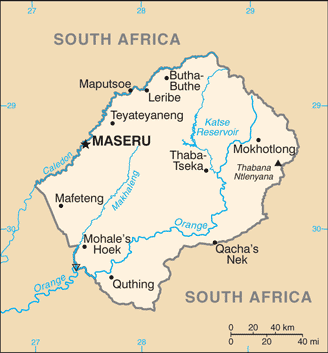Investing in Lesotho


Small, landlocked, and mountainous, Lesotho relies on remittances from Basotho employed in South Africa, customs duties from the Southern Africa Customs Union (SACU), and export revenue for the majority of government revenue. However, the government has recently strengthened its tax system to reduce dependency on customs duties. Completion of a major hydropower facility in January 1998 permitted the sale of water to South Africa and generated royalties for Lesotho. Lesotho produces about 90% of its own electrical power needs. As the number of mineworkers has declined steadily over the past several years, a small manufacturing base has developed based on farm products that support the milling, canning, leather, and jute industries, as well as an apparel-assembly sector. Despite Lesotho's market-based economy being heavily tied to its neighbor South Africa, the US is an important trade partner because of the export sector's heavy dependence on apparel exports. Exports have grown significantly because of the trade benefits contained in the Africa Growth and Opportunity Act. Most of the labor force is engaged in subsistence agriculture, especially livestock herding, although drought has decreased agricultural activity. The extreme inequality in the distribution of income remains a major drawback. Lesotho has signed an Interim Poverty Reduction and Growth Facility with the IMF. In July 2007, Lesotho signed a Millennium Challenge Account Compact with the US worth $362.5 million. Economic growth dropped in 2009, due mainly to the effects of the global economic crisis as demand for the country's exports declined and SACU revenue fell precipitously when South Africa - the primary contributor to the SACU revenue pool - went into recession, but growth returned to 3.5% in 2010.
Bank of Lesotho - http://www.centralbank.org.ls/
Learn more:
Back to Country Investing



